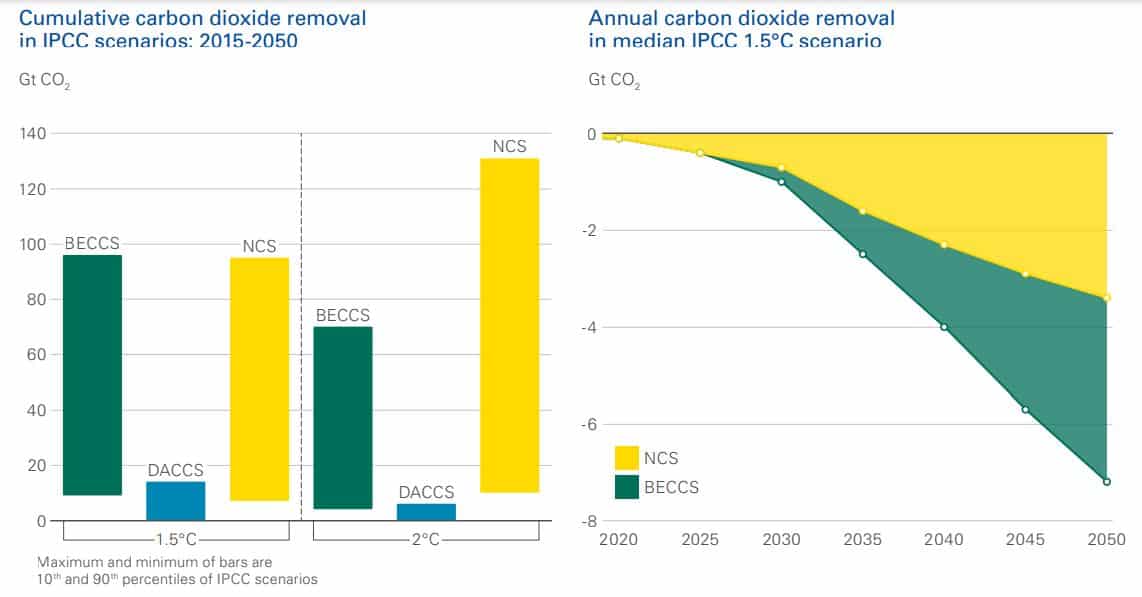The United Nations (UN) has drafted a document that will define a new global carbon market for years to come, which seems to favor nature-based solutions over technological or engineered carbon removals.
The UN panel casts doubt on the promise of using machines to remove CO2 and tackle the climate crisis. This is sending shock waves through the rising carbon dioxide removal (CDR) industry, which scientists said is critical to reduce global warming.
The high-profile group shots a simple yet baffling question: nature vs. technology – which deserves a carbon credit?
Carbon Removals Don’t Serve Paris’ Article 6.4?
The Biden administration has started pumping billions of dollars into carbon removal solutions to help establish the CDR industry in the U.S. Large companies across sectors have also been betting their money in this emerging industry. The likes of Apple, Microsoft, Stripe, and even JPMorgan have invested hundreds of millions in carbon removal credits.
But the UN panel appears to prefer the natural ways of capturing CO2. The group is questioning the technical and economic viability of startups seeking to remove carbon that’s already in the atmosphere. In their note, the panel wrote:
“Engineering-based removal activities are technologically and economically unproven, especially at scale, and pose unknown environmental and social risks. These activities do not contribute to sustainable development, are not suitable for implementation in the developing countries and do not contribute to reducing the global mitigation costs.”
In short, they believe that CDR solutions are not serving any of the goals of the Article 6.4 provision.
A Global Carbon Trading System
The Paris Agreement on climate change contains a specific provision calling for the creation of an international carbon trading program. It’s officially referred to as Article 6.4.
The mechanism sets the international carbon trading system wherein companies can offset their emissions by funding a project that reduces or removes CO2. They can then trade the carbon offsets the project generates in voluntary carbon markets and claim their environmental impact.
- The market for carbon offset credits is currently valued at around $2 billion. By 2050, it can grow to about $160 billion to over $600 billion annually. In another market analysis, operating on carbon removal alone will bring the market to $1 trillion by 2037.
The UN group is tasked with setting up the worldwide carbon trading system. So, the position it takes on which approach in capturing CO2 is best can significantly affect the CDR industry’s fate.
Carbon Credits from the Trees or Giant Fans?
Basically, there are two ways to remove carbon from the air and the oceans. One is through carbon-hungry trees and sea grasses. The other is to use carbon removal technologies such as direct air capture (DAC) that employs giant fans in sucking the CO2.
Both natural and technological climate solutions can be effective ways to mitigate the worst effects of global warming.
But the UN experts find nature-based carbon market solutions such as reforestation more beneficial despite studies showing some projects failing to deliver their carbon reduction promises. Questions on their durability and quality abound.
On the other hand, the price of carbon credits generated by engineered removals isn’t cheap. For instance, DAC is still expensive and can remove only a few thousand tons of CO2 a year. In particular, carbon removal startup Charm Industrial sells its carbon removal credit at around $600/metric ton.
If the group considers natural solutions the true way to remove carbon from the air, it can potentially stop a growing sector of the very market it serves.
So, which solution is worthy of a carbon credit certificate?
The carbon removal industry offers a sensible answer, and it’s not one that’s better than the other.
A Criteria-Based Approach
The UN-backed IPCC believes that CDR is necessary to achieve the Paris climate goals as shown below. CDR includes bioenergy combined with CCUS (BECCS), natural climate solutions (NCS), and direct air carbon capture with storage (DACCS).
Achieving the Paris Goal with Carbon Removal
But the panel broadly defines the concept of carbon removal as “anthropogenic activities removing CO2 from the atmosphere and durably storing it in geological, terrestrial, or ocean reservoirs, or in products.” This definition doesn’t clearly differentiate natural from engineered CO2 removal solutions.
Over 100 supporters of the carbon removal industry call for the UN intergovernmental group to opt for a “method-neutral, criteria-based approach” to the issue.
Ben Rubin from the Carbon Business Council, a nonprofit representing the carbon removal companies that signed a letter responding to the UN’s draft, asserted that each CDR approach is a combination of nature and engineering. He further said that:
“The lines just start blurring so quickly. Which is why I think having a criteria-based approach has the most clarity rather than artificially saying that one thing is nature and one thing is technological. The [CDR] sector is advancing quickly, and there are a number of approaches ready for eligibility under Article 6.4 now, with more expected to reach that stage of maturity in coming years.”
Rubin cited enhanced rock weathering (ERW) and biochar carbon removals that employ both natural and engineered ways to capture CO2. He also invited the UN to connect with CDR projects worldwide where they contribute to local and regional economic development.
The UN carbon removal group hasn’t set a deadline for establishing the CO2 emissions trading system but will likely make its final decision at the COP28 climate talks by the end of November in Dubai. While there’s no formal framework in place yet, the note seems to point what direction the final decision may take.


